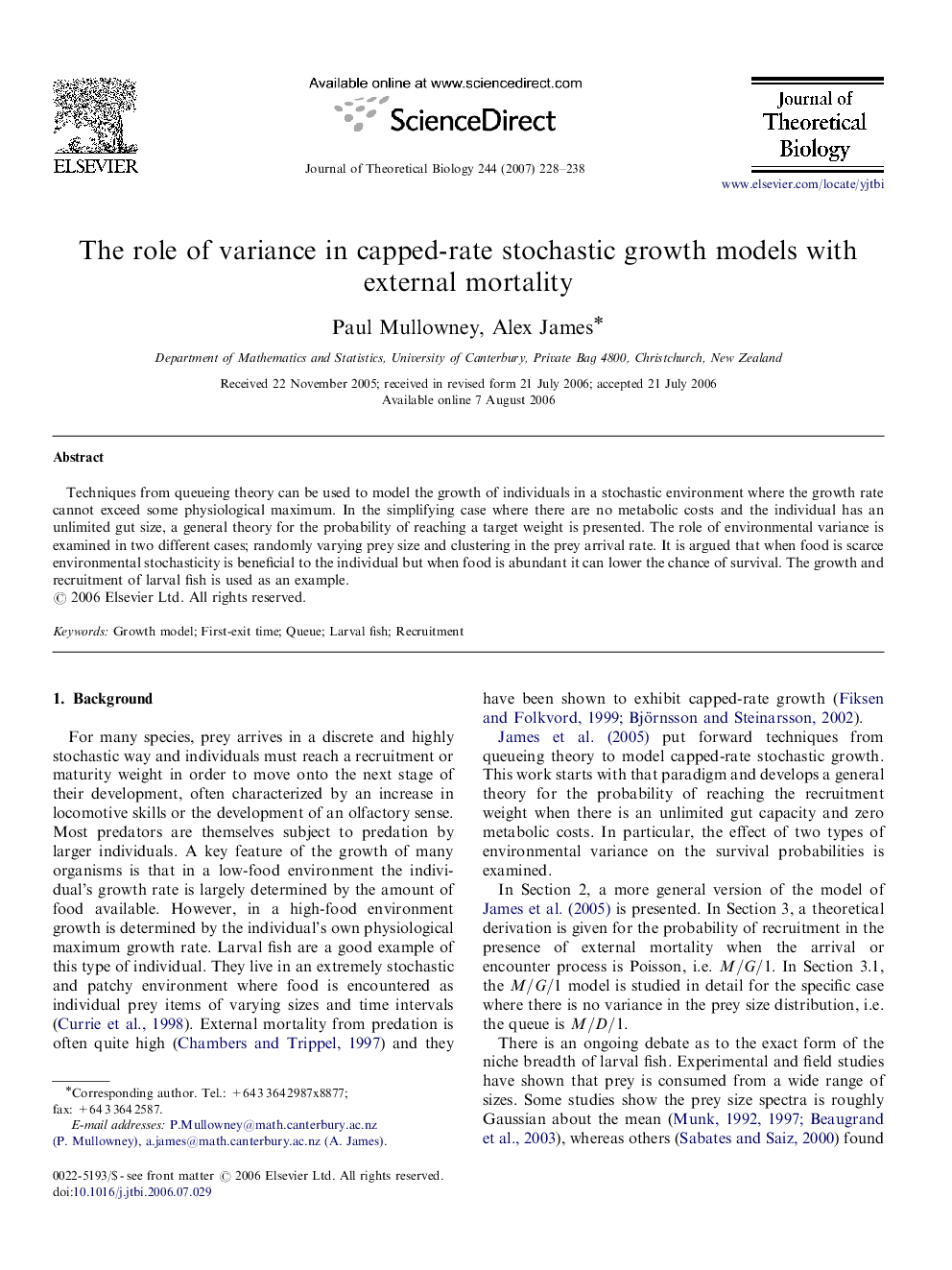| Article ID | Journal | Published Year | Pages | File Type |
|---|---|---|---|---|
| 4498956 | Journal of Theoretical Biology | 2007 | 11 Pages |
Abstract
Techniques from queueing theory can be used to model the growth of individuals in a stochastic environment where the growth rate cannot exceed some physiological maximum. In the simplifying case where there are no metabolic costs and the individual has an unlimited gut size, a general theory for the probability of reaching a target weight is presented. The role of environmental variance is examined in two different cases; randomly varying prey size and clustering in the prey arrival rate. It is argued that when food is scarce environmental stochasticity is beneficial to the individual but when food is abundant it can lower the chance of survival. The growth and recruitment of larval fish is used as an example.
Related Topics
Life Sciences
Agricultural and Biological Sciences
Agricultural and Biological Sciences (General)
Authors
Paul Mullowney, Alex James,
